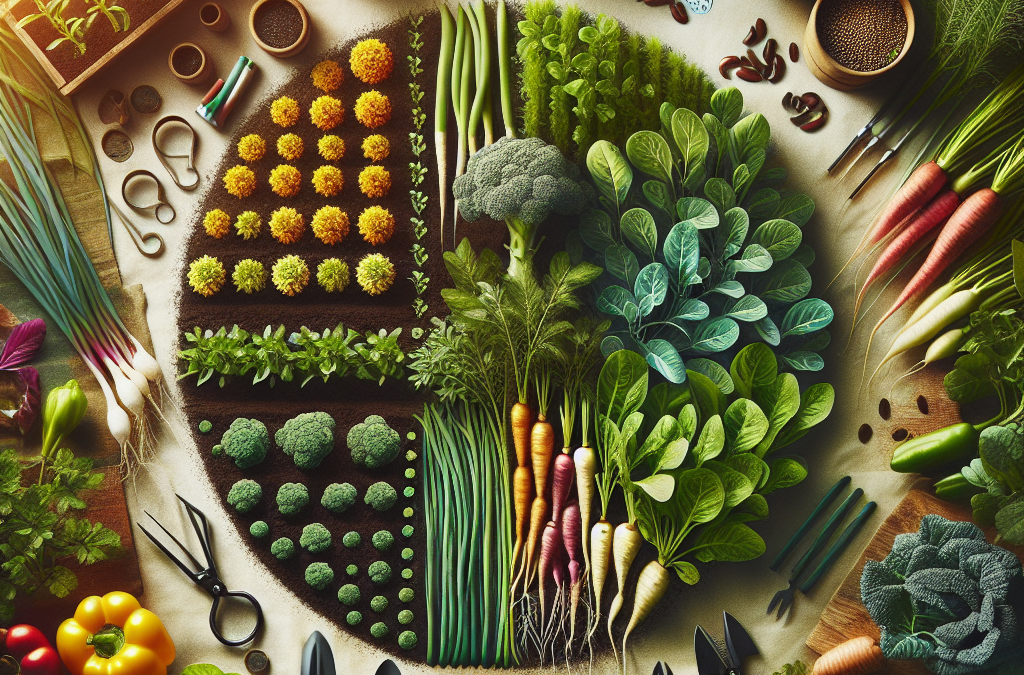Enhancing Soil Health
Understanding Nutrient Cycling
One of the first things I learned as a budding gardener is that not all plants are created equal when it comes to nutrient needs. Some plants are heavy feeders, while others are quite light. By rotating crops, I’m able to help my soil stay balanced and avoid the nutrient depletion that can happen if I keep planting the same thing in the same spot year after year.
Every time I plant something new, I think about the nutrient needs of the next tenant in that patch. For example, legumes like beans and peas can fix nitrogen in the soil, making it available for the next crop. This kind of smart planning can give my garden a real boost.
It’s also worth mentioning that rotating crops can enhance soil structure. Different root systems can improve aeration and drainage. Over time, this leads to healthier plants, which makes my gardening experience so much more rewarding!
Controlling Pests and Diseases
The Importance of Diversity
One of my least favorite surprises while tending my garden has been discovering that pests and diseases can spread like wildfire if I’m not careful. When I kept my plants in the same spot year after year, the pests just kept coming back! It was like a relentless battle.
By changing things up each season, I not only confuse the pests but also break their life cycles. This diversity means that any pest or disease that loved my tomatoes last year might not find them this year, which has been a game-changer for my garden’s health.
I’ve found that rotating crops can also reduce reliance on pesticides, which is a plus for both my garden ecosystem and the environment! It feels good knowing I’m nurturing a balanced habitat instead of just waging a war against pests.
Boosting Yields
Growing for Success
Let’s be real: we all want a bountiful garden! In my experience, crop rotation can actually lead to better yields. When I’ve rotated my crops properly, I’ve noticed that my plants tend to be healthier and more productive.
This is partly because of improved soil health and partly due to the prevention of diseases as mentioned earlier. A thriving garden means I can enjoy more vegetables, herbs, and flowers, and who doesn’t love a vibrant, productive backyard?
I always keep a garden journal to track what I plant where and how well it does. It’s helped me figure out which combinations yield the best results. Experimenting with crop rotation is like a gardening adventure with delicious rewards at the end!
Promoting Biodiversity
A Harmonious Garden Environment
By mixing things up in my garden, not only do I keep it interesting for myself, but I also attract a diverse array of beneficial insects and wildlife. Rotating crops invites new species to the party, which can be incredibly advantageous for my garden.
Some plants attract pollinators while others can deter harmful bugs. It’s fascinating to see how these interactions create a sort of mini-ecosystem right in my backyard. Plus, it’s a lovely sight to see butterflies flitting among my flowers.
Over time, I’ve learned that the more diverse my garden, the better it can withstand pests, diseases, and even climate changes. I feel a real sense of accomplishment knowing I’m creating a balance in my garden with every rotation.
Simplifying Garden Management
A New Perspective on Planning
Initially, planning my garden felt like a chore, but once I embraced crop rotation, it became a refreshing challenge. Taking stock of what I’ve planted and where helps keep things organized and manageable, so I don’t feel overwhelmed each season.
I love the newness that comes with every planting season! It’s never boring; each time I rotate crops, I find myself researching new companions or experimenting with new varieties. This approach transforms the gardening process into an exciting adventure.
By rotating crops regularly, I reduce the amount of time I need to spend on pest control methods and soil amendments because I’m always working proactively to maintain balance. Who knew gardening could be this much fun and still be so productive?
FAQ
1. What is crop rotation and why is it important?
Crop rotation is the practice of changing the type of crops grown in each area of your garden from season to season. It’s important because it helps maintain soil health, controls pests and diseases, boosts yields, promotes biodiversity, and simplifies garden management.
2. How does crop rotation enhance soil health?
Crop rotation enhances soil health by preventing nutrient depletion. Different plants have varied nutrient requirements, and rotating crops helps ensure that the soil remains rich and balanced. Additionally, various root systems can improve soil structure and aeration.
3. Can crop rotation really help with pest control?
Absolutely! Rotating crops disrupts pest life cycles and prevents them from becoming established. When you plant different crops, pests that thrived on previous plants will struggle to find food, thereby reducing their population.
4. What should I consider when planning my crop rotation?
When planning your crop rotation, consider the nutrient needs and growth habits of each plant. Group crops based on their families (like legumes, brassicas, etc.) and plan which nutrients each group contributes and consumes from the soil.
5. How often should I rotate my crops?
It’s generally a good idea to rotate your crops each season. However, some gardeners find success with multi-year rotation plans. The key is to track your plantings to create a well-informed rotation system that works for your garden.





